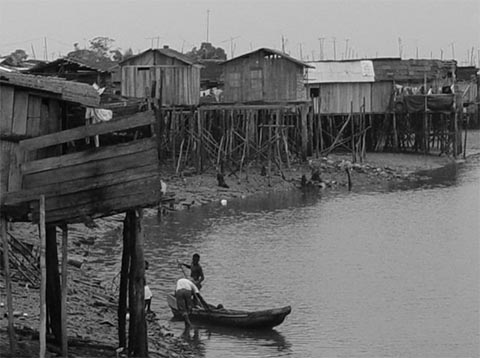Katrina and social vulnerability: Susceptibility and resilience

The first step in overcoming natural disaster lies in defining social vulnerability. According to one definition, social vulnerability means “the characteristics of a person or group in terms of their capacity to anticipate, cope with, resist, and recover from the impact of a natural hazard.” Ben Wisner, At Risk (2d ed. 2003). In The Geography of Social Vulnerability: Race, Class, and Catastrophe, Susan Cutter elaborates this definition in a very useful way: “Social vulnerability is partially a product of social inequalities – those social factors and forces that create the susceptibility of various groups to harm, and in turn affect their ability to respond, and bounce back (resilience) after the disaster.”
In other words, social vulnerability consists of two distinct components: the susceptibility of certain groups to harm and the resilience of these groups. Susceptibility is an ex ante quality; it is already in place when disaster strikes. Inequality in New Orleans and elsewhere throughout America has taken hundreds of years to build. Differences in living conditions, wealth, and political power rendered the poorest, often black victims of Katrina susceptible to disproportionate loss during the storm.
Resilience, by contrast, assumes importance after the fact. Rebuilding communities destroyed by natural disaster demands extraordinary human and material resources. Material resources available for recovery – and often taken for granted – in more affluent communities may simply not exist in poorer communities. Crucial physical and social infrastructure, often strained or undermined by disaster and its aftermath, is not as readily reestablished. See generally Mapping Vulnerability: Disasters, Development and People (Greg Bankoff et al. eds., 2003).
Katrina played itself in media reports as a grand tragedy of race and class, of official incompetence and social injustice. If anything, the condemnation of a society that found itself unprepared for Katrina has not been severe enough. To prevent or at least to mitigate future disasters, we must confront social vulnerability in all its manifestations, from its racial and class-based dimensions to other vectors of discrimination laid bare by the storm, such as sex, age, and immigrant status. All of these factors contribute to the susceptibility of specific individuals and groups to disaster. In addition to recognizing and making best efforts to ameliorate these sources of susceptibility to harm during disasters, government owes its weakest citizens a corresponding responsibility to maximize their resilience in disaster’s wake.
If anything redeems the tragedy that was Hurricane Katrina, it is America’s collective appreciation of the survival, suffering, and heroism that accompanied the storm. A society better attuned to questions of social vulnerability might yet glimpse some future time when that storm’s winds and rains have fully subsided and “the needles thick on the ground” of the Gulf shore “will deaden the footfall so that we shall move among trees as soundlessly as smoke.” Robert Penn Warren, All the King's Men. “But that will be a long time from now, and soon now we shall go … into the convulsion of the world, out of history into history and the awful responsibility of Time.” Id.
Notes:
- The image at the top of this post depicts Tumaco, Colombia, the victim of a Pacific Ocean tsunami on December 12, 1979. It illustrates the newsletter of International Strategy for Disaster Reduction.
- Chapter 4 of the new casebook, Disasters and the Law: Katrina and Beyond, edited by Daniel A. Farber and Jim Chen, is devoted to the question of social vulnerability.












0 Comments:
Post a Comment
<< Home